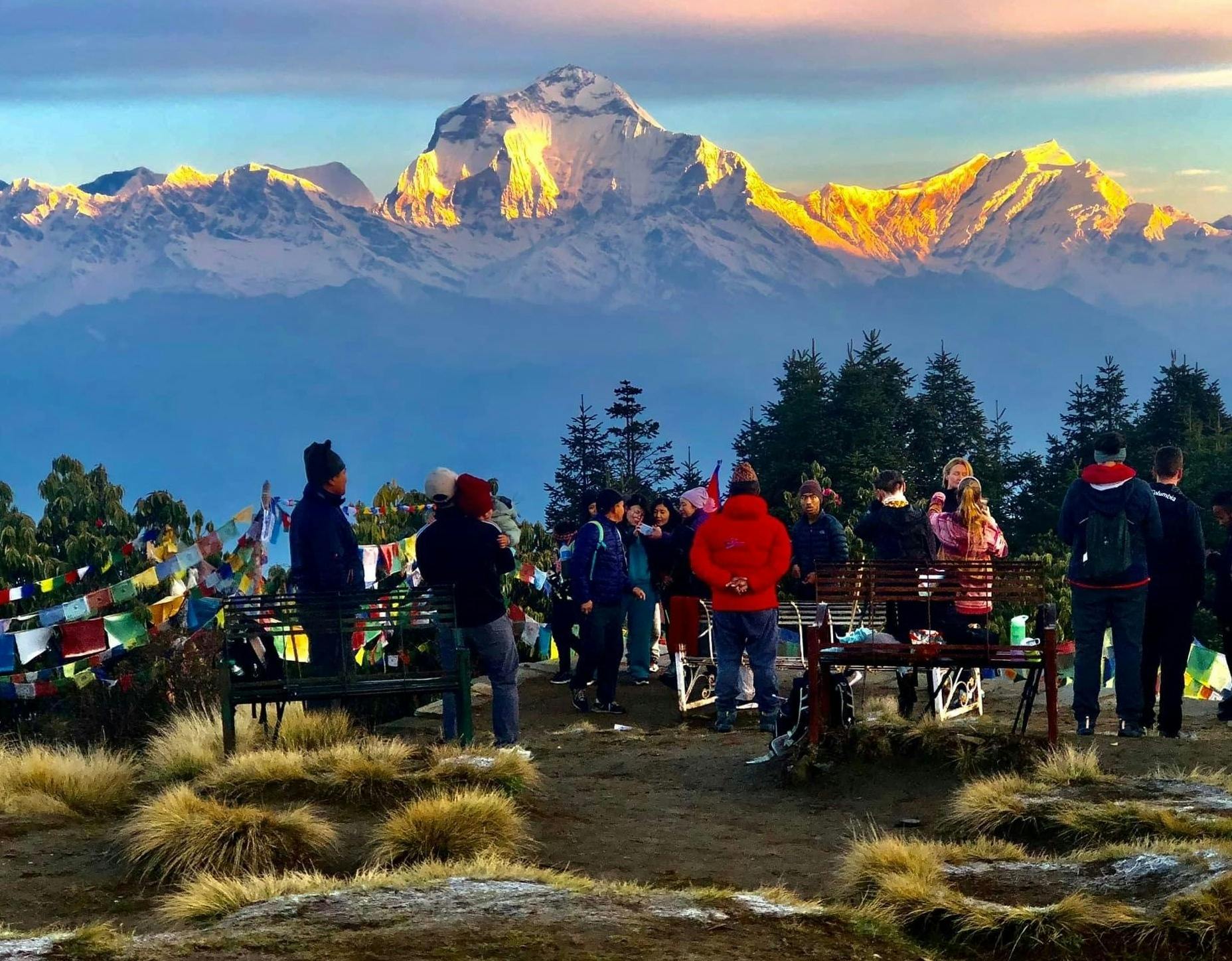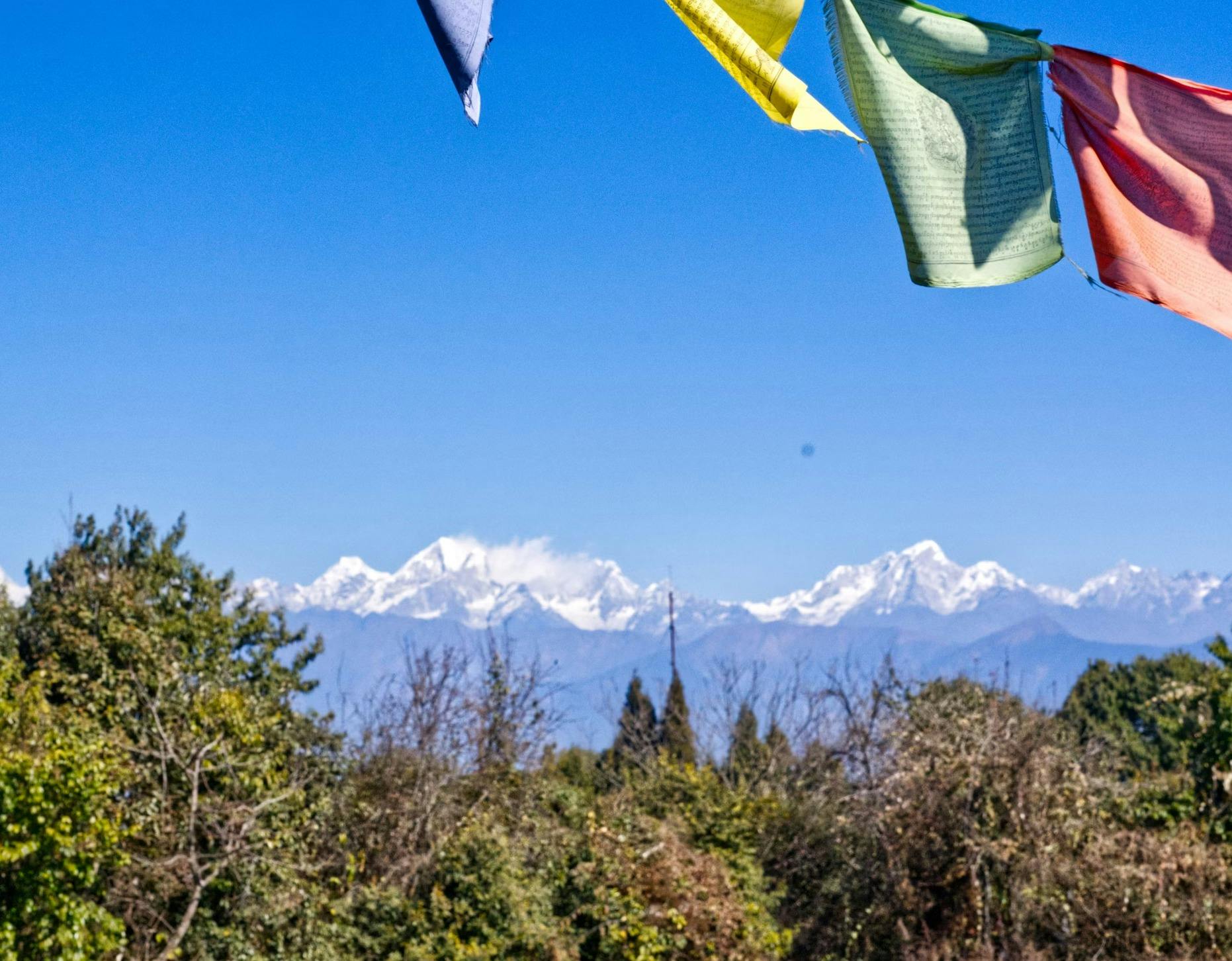Nepal is a country that is rich in natural wonders amalgamated brilliantly with cultural and traditional aspects of ethnic people. Nepal is a landlocked central Himalayan country in South Asia. With a diverse geography that includes fertile plains in the south, subalpine forested hills, and eight of the world's ten tallest mountains, including Mount Everest- the highest point on Earth, Nepal houses some of the most beautiful landscapes on the planet. Nepal is a multi-ethnic, multi-lingual and multi-cultural nation filled with mesmerizing art and architecture that is not found anywhere else on the planet. Divided into three physiographic areas of Mountain, Hill, and Terai, Nepal's ecological belts run east-west and are vertically intersected by the country's major, north to south flowing river systems. The Mountain Region (Himalaya) is situated in the Great Himalayan Range. It makes up the northern part of Nepal that comprises the highest peaks like Mount Everest on the border with China. Seven other of the world's "eight-thousanders" are in Nepal or on its border with China like the Lhotse, Makalu, Cho Oyu, Kangchenjunga, Dhaulagiri, Annapurna, and Manaslu. As such, Trekking in Nepal is a popular activity among travelers. Besides trekking, Nepal also offers many other adventures, cultural and historical sites, and traditional diversities.
Mount Everest

Known as Sagarmāthā in Nepali, Mount Everest is the highest mountain on Earth. The Sherpa people also call it the Chomolungma. With its 8,848 meters peak, Mount Everest lies on the Mahalangur Himalayan Range in the Khumbu region of Nepal. Everest's massif includes neighboring peaks of Lhotse, Nuptse, and Chhangtse. First ascended by Sir Edmund Hillary and Tenzing Norgay Sherpa in 1953, Mount Everest is a famous trekking destination. The popular Everest Base Camp Trek is done by thousands of trekkers every year. Khumbu's various locations and settlements further enhance the appeal of Mount Everest. The town of Namche Bazaar is famous in Khumbu for trekkers who come across while on their journey to Everest's base camp (5,364m). Namche, often known as the "Gateway to Everest," presents gorgeous views of mountains from its acreage. The Tengboche Monastery also gives the trekking journey a spiritual authenticity. The largest monastery in the Khumbu region, Tengboche, offers a panoramic view of the Himalayan Mountains, including Tawache, Everest, Nuptse, Lhotse, Ama Dablam, Thamserku and more. Tenzing Norgay was once sent to the monastery to be a monk. Located on a hill at the confluence of the Dudh Kosi and the Imja Khola rivers, Tengboche is one of the most beautiful places in the country. One of the most famous vantage points to view the Everest Massif would be Kalapatthar.
Tilicho Lake

Located at Manang 55 km away from Pokhara, the Tilicho Lake is the highest glacial lake, situated at 4,919 meters in the Annapurna Himalayan Ranges. With its sapphire waters and tranquil environment, Tilicho Lake is a famous destination for the Annapurna Circuit Trek. The peaks of Tilicho, Nilgiri, and Khangsar can also be seen from the vicinity of the lake. Tilicho lake is also the site of one of the highest ever altitude scuba dives.
Machhapuchhre Himal

Machhapuchhre (6,993m) is a majestic peak of north-central Nepal revered by the local population as sacred to the God Shiva. Situated at the end of a long spur ridge coming south out of the Annapurna Himalayas' main backbone that forms the Annapurna Sanctuary's eastern boundary. Mount Machhapuchhre lies about 25 km north of Pokhara. Due to its southern position in the range, and the shallow terrain in the south of Annapurna Himalayas, the peak commands tremendous vertical relief in a short horizontal distance. Machhapuchhre, combined with its steep, pointed profile, makes it an exceptionally striking peak, despite a lower elevation than some of its neighbors. Its double summit resembles the tail of a fish. Hence the name translates to "Fishtail." It is also nicknamed the "Matterhorn of Nepal." This sacred mountain is closed off for climbers.
The Kali Gandaki Gorge of Nepal

A gorge of the Gandaki River in the Himalayas in Nepal, the Kali Gandaki Gorge is the deepest canyon in the world, being 5,571 meters lower than the Annapurna I. Geologically, the gorge is within a structural graben- separating the significant peaks of Dhaulagiri on the west and Annapurna on the east. The upper part of the gorge is also called Thak Khola after the local Thakali people who became prosperous from the trans-Himalayan trade. The region of Kali Gandaki is also known for Shaligram fossils, revered as one of five non-living forms of Lord Vishnu and considered sacred. The Kali Gandaki Gorge has been used as a trade route between India and Tibet. It is part of a popular trekking route from Pokhara to Muktinath and Annapurna Circuit within the Annapurna Conservation Area.
Langtang Valley

Also known as the Valley of the Glaciers, Langtang lies north of the Kathmandu Valley and borders Tibet. With most of the residents being Tamang, Langtang is a beautiful valley considered a haven for Tibetan Buddhist people. The Langtang National Park covers the majority of the valley's area. Langtang has one of the most diverse and beautiful flora and fauna counts in the country, with 14 vegetation in 18 ecosystem types. That ranges from upper tropical forests below 1,000 meters altitude to alpine scrub and perennial ice representing Indo-Malayan and Palearctic ecozones. Animal life includes the Himalayan black bear, the goat-like Himalayan Thars, rhesus monkeys, and red pandas. The park also contains the Gosaikunda lakes, sacred to Hindus. Pilgrimages to the lake are made in August. Another spiritual site in Langtang is the Buddhist monastery Kyanjing Gompa.
Manaslu Mountain

The eighth highest mountain in the world at 8,163 meters, Mount Manaslu, is located in the Mansiri Himal, part of the Nepalese Himalayas, in the west-central part of Nepal. 'Manaslu' means "mountain of the spirit", and its name comes from the Sanskrit word Manasa, which means "intellect" or "soul". Thus, Manaslu is also called "the Mountain of spirits". Manaslu is the highest peak in the Gorkha District, 64 km away east from Annapurna. The mountain's long ridges and valley glaciers offer feasible approaches from all directions, and the ridges culminate in a peak that towers steeply above its surrounding landscape. This feature of the mountain presents a stunning look from afar. Manaslu is also sometimes serrated as the "wall of snow and ice hanging in the sky". The three sides of the mountain fall in steps to terraces below, sparsely inhabited with agricultural farmlands. The Manaslu Conservation Area subsumes Manaslu within it.
Kanchenjunga Mountain
[caption id="" align="alignnone" width="1280"] Kanchenjunga Mountains[/caption]
Kanchenjunga Mountains[/caption]
The third highest mountain, Kanchenjunga, is called the Five Treasures of Snow after its five high peaks. The people of Darjeeling and Sikkim have always worshiped the mountain. Local Lhopo people believe that the treasures are hidden but reveal themselves to the devout when the world is in peril. The treasures include salt, gold, turquoise, precious stones, sacred scriptures, invincible armor or ammunition, grain, and medicine. Four main glaciers also radiate from the peak of Kanchenjunga. Due to its remote location in Nepal and the difficulty of accessing it from India, the Kangchenjunga region is not much explored by trekkers. It has, therefore, retained much of its pristine beauty. The area around Kangchenjunga is also home to a mountain deity called Dzö-nga or "the Kangchenjunga Demon"- a type of yeti or rakshasa. For generations, both Nepal and Tibet inhabitants recounted legends of a valley of immortality hidden on its slopes. These stories are well known to both the original inhabitants of the area, the Lepcha people, and those of the Tibetan Buddhist cultural tradition.
Phewa Lake

The second largest lake of Nepal, located in the south of Pokhara Valley, Phewa Lake, is a semi-natural freshwater lake. At 742 meters, the lake lies below the Annapurna range to the north. Famous for the reflection of mount Machhapuchhre and other mountain peaks of the Annapurna and Dhaulagiri ranges on its cerulean surface, Phewa Lake also has the Taal Barahi Temple is situated on an island at its center. Baidam, also known as the 'Lakeside', is the eastern bank of Phewa Lake, containing a seemingly endless strip of hotels, lodges, restaurants, bookshops, and souvenir shops. This site is one of the best-known tourist places in Nepal. A day tour in Pokhara would be a mesmerizing experience.
Dhaulagiri Himal

Extending 120 km from the Kaligandaki River west to the Bheri River, Mount Dhaulagiri is Nepal's most beautiful mountain massif. Dhaulagiri I is also the seventh highest mountain standing at 8,167 meters. The name of Mount Dhaulagiri comes from the Sanskrit word "dhawala" which means dazzling, white, beautiful and "giri" which means mountain. Dhaulagiri I is also the highest point of the Gandaki River Basin. Dhaulagiri I's sudden rise from lower terrain is almost unequaled as it rises 7,000m from Kali Gandaki River and 30 km to the southeast.
Rara Lake

The biggest and deepest freshwater lake in the Nepal Himalayas, Rara Lake is the main feature of the Rara National Park. The lake at 2,990m in Jumla and Mugu districts has unique floral and faunal importance with many rare and vulnerable species within its prominence. The glimpses of culture and scenery on the way are pretty different from the rest of Nepal, making Rara Lake a popular destination with a very rough route in western Nepal for trekkers. Rara Lake has also been described as "a shimmering blue jewel set in a ring of snowy peaks".
Annapurna Range

The Annapurna massif is a 55 kilometers long mountain range bounded by the Kali Gandaki Gorge on the west, the Marshyangdi River on the north and east, and Pokhara Valley on the south. The massif encloses a high basin called the Annapurna Sanctuary at the western end. Annapurna I Main is the tenth highest mountain at 8,091 meters. The entire massif and surrounding areas are protected within the Annapurna Conservation Area, Nepal's first and largest conservation area. Annapurna is a Sanskrit name that means "full of food" but is generally translated as the Goddess of the Harvest. The Annapurna Conservation Area is a well-known trekking region, with many trekkers doing the Annapurna Base Camp Trek every year.
Gosaikunda Lake of Nepal

An alpine freshwater oligotrophic lake in Nepal's Langtang National Park located at an altitude of 4,380 meters, Gosaikunda Lake, is a sacred site of the Hindu people. Hindu mythology attributes Gosaikunda as the abode of the Hindu deities Shiva and Gauri. Its waters are considered holy and of particular significance during the Gangadashahara and the Janai Purnima festivals, when thousands of pilgrims from Nepal and India visit the area. The myth of the Gosaikunda Lake says that it was created when Lord Shiva struck a mountainside with his trident to drink from the flowing mountain water to quench his thrust after swallowing a poison threatening to destroy the world.





